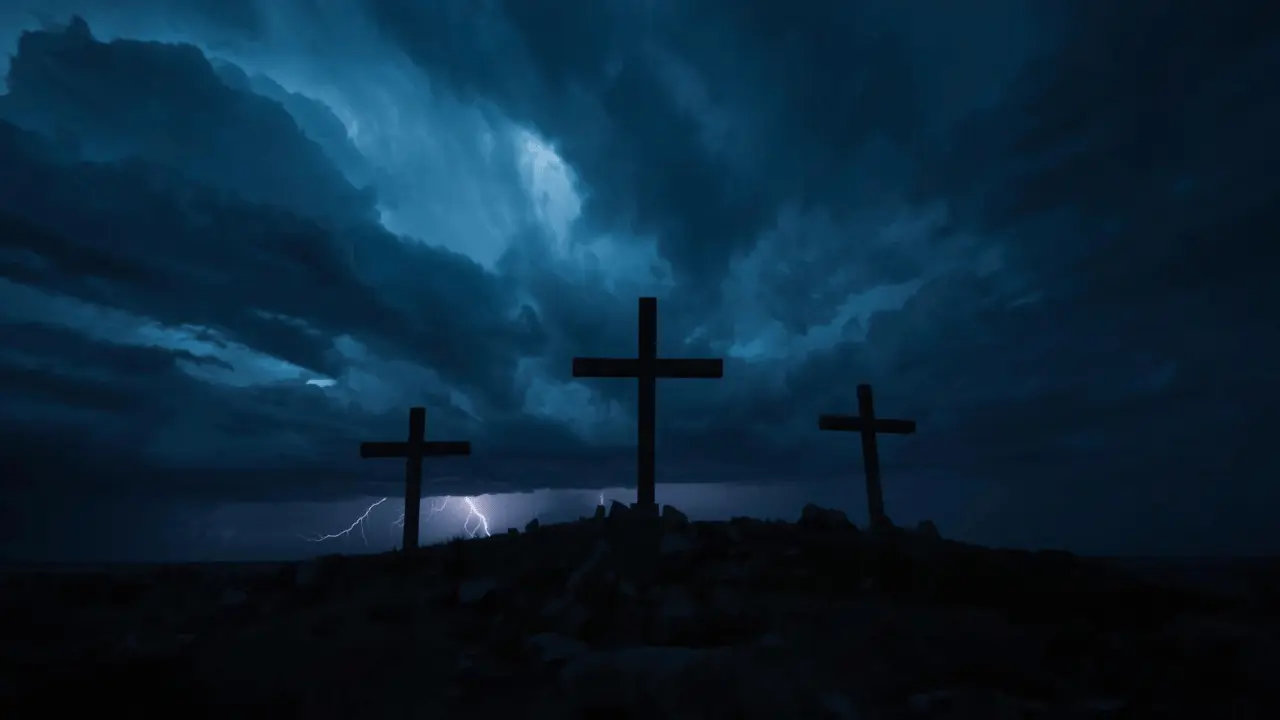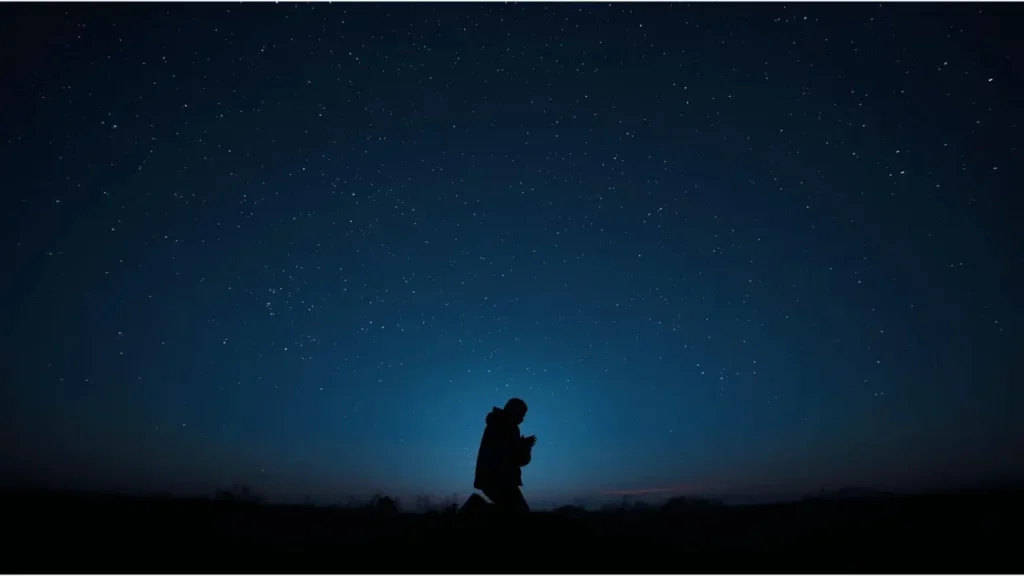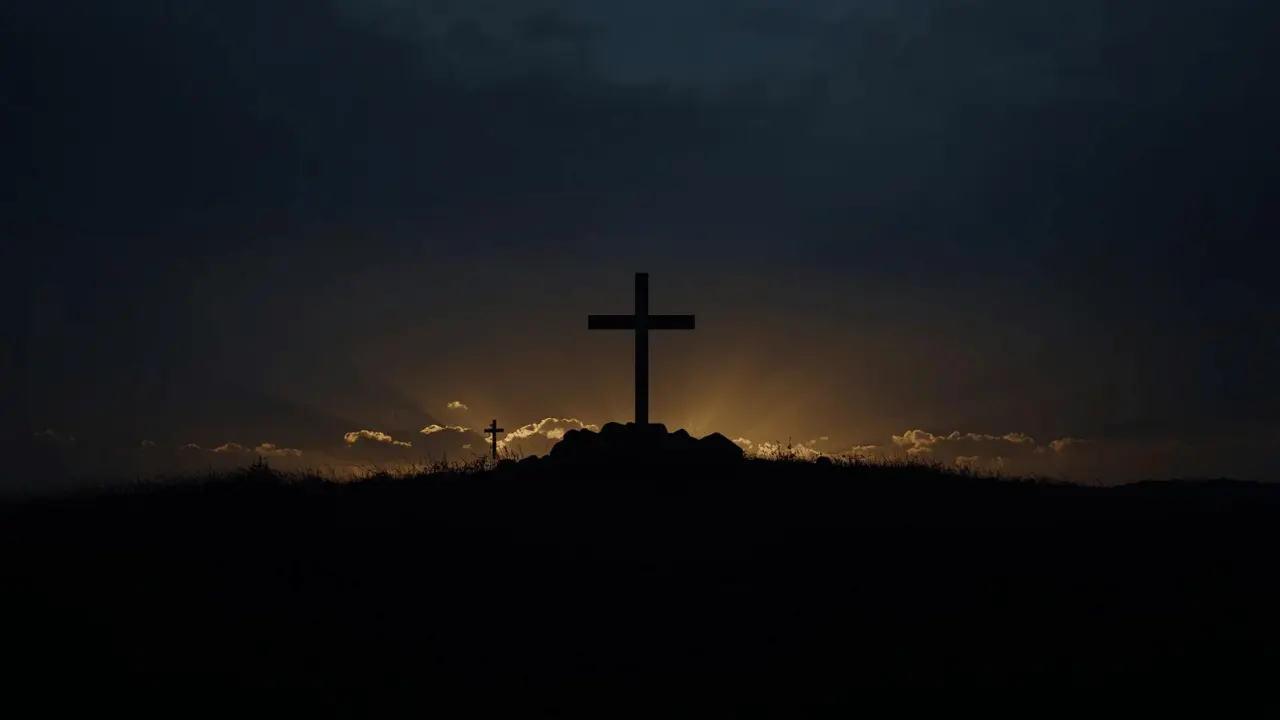When the Light Went Out
Few moments in history carry the awe and weight of the crucifixion of Jesus Christ. Among all the signs surrounding His death, one stands apart — a mysterious darkness that fell over the land for three long hours, from noon until three in the afternoon.
Picture it: the brightest time of day suddenly shrouded in night. The air still. The crowd hushed. The world itself seemed to hold its breath. This was no eclipse, no passing storm. It was as if creation mourned its own Creator.
The “three hours of darkness” have stirred wonder and reflection for centuries. Was it a natural event — or a supernatural sign? Why does Scripture mention the “third hour” and “ninth hour” with such precision?
The Three Hours of Darkness
The Biblical Record
All three Synoptic Gospels record this event in unison:
“From the sixth hour until the ninth hour, darkness came over all the land.”
— Matthew 27:45; Mark 15:33; Luke 23:44
In the timekeeping of Jesus’ day, the sixth hour was noon and the ninth hour was 3 p.m. So, for three hours in the middle of the day — the brightest part of the afternoon — darkness covered the land.
Just before Jesus cried out, “My God, My God, why have You forsaken Me?” the light vanished. Then, after His final breath, the temple veil tore in two. Heaven and earth bore witness to a divine mystery unfolding.
A Cosmic Mourning
Throughout Scripture, darkness often carries spiritual weight. During the plagues of Egypt, it came before Israel’s deliverance. When God descended on Mount Sinai, the mountain was enveloped in cloud and gloom.
- It was creation mourning its Creator.
- It was divine judgment — not on Christ, but on sin itself.
- It was the moment when the Light of the World entered humanity’s deepest night.
This wasn’t a solar eclipse — Passover took place during a full moon, making that impossible. It was a miracle, a sign that all of creation was watching redemption unfold.
What Happened During the Three Hours of Darkness

From noon to 3 p.m., Jesus endured the deepest anguish — body, soul, and spirit. The darkness outside reflected the agony within.
1. Spiritual Separation
For the first time in eternity, the Son experienced separation from the Father. As He bore humanity’s sin, the perfect fellowship between them was veiled — mirrored by the physical veil of darkness over the land.
When Jesus cried, “My God, My God, why have You forsaken Me?”, it wasn’t despair but fulfillment — the opening verse of Psalm 22, a prophetic song that ends not in defeat but triumph.
2. The Divine Exchange
Those hours marked history’s greatest exchange: the innocent for the guilty, the righteous for the sinful. The judgment that was ours fell upon Him, so that we could walk in His light forever.
3. The Turning Point of Redemption
At the ninth hour, Jesus declared, “It is finished.” The darkness lifted, the temple veil tore, and the barrier between God and humanity was broken. The old covenant ended; the new one began. Heaven’s door was flung open.
Understand the “Third Hour” in the Bible
The Gospels mention the “third,” “sixth,” and “ninth” hours for a reason — each marks a moment of sacred significance.
Ancient Timekeeping
In Jewish culture, daylight was divided into twelve hours, starting at sunrise (around 6 a.m.).
- The third hour — about 9 a.m.
- The sixth hour — about noon
- The ninth hour — about 3 p.m.
According to Mark 15:25, Jesus was crucified at the third hour (around 9 a.m.). Darkness then fell from noon to 3 p.m., when He gave up His spirit.
So, in modern timing:
- 9 a.m. → Jesus is nailed to the cross
- 12 p.m. → Darkness covers the land
- 3 p.m. → Jesus dies; the veil tears; redemption is complete
The Symbolism of the Hours
Each hour reveals a divine rhythm:
- Morning (the third hour): The beginning of sacrifice
- Noon to 3 p.m. (darkness): The burden of sin and judgment
- The ninth hour: The victory of mercy and forgiveness
Every moment of the Passion was divinely timed — a story of love written in hours.
The Hour of Mercy: The Power of 3 p.m. Prayer
In Christian devotion, 3 p.m. is known as The Hour of Mercy — the moment Jesus breathed His last.
Saint Faustina Kowalska, a 20th-century Polish nun, recorded these words from Jesus in her diary:
“At three o’clock, implore My mercy, especially for sinners; and, if only for a brief moment, immerse yourself in My Passion.”
Today, millions around the world pause at 3 p.m. to pray the Divine Mercy Chaplet, meditate on the Cross, or simply thank God for His grace.
💡 Reflection: If you ever feel distant from God, stop at 3 p.m. — even for a minute — and remember: This is the hour mercy triumphed.
The Mystery of 3 a.m.: The Spiritual Watch Hour

Although Scripture doesn’t assign special meaning to 3 a.m., many Christians see it as a spiritual watch hour — a time of prayer, vigilance, and intimacy with God.
In ancient Jewish tradition, the night was divided into four watches. The third watch, between midnight and 3 a.m., was the stillest time — when few were awake, but heaven was listening.
Why Some Pray at 3 a.m.
- Spiritual sensitivity: Many feel a heightened awareness of God’s presence in the quiet of night.
- Warfare prayer: It’s often seen as a time to intercede against darkness and declare victory in Christ.
- Deep intimacy: In the stillness, distractions fade, and hearts can listen more closely to God.
Though not commanded, the practice carries beautiful symbolism — watching in the night, waiting for dawn, just as the disciples once did in Gethsemane.
Darkness at the Crucifixion: Lessons for Today
The three hours of darkness are not just an event of the past — they mirror our own faith journey.
1. God Works in the Dark
The world went dark at Calvary, but that was the very hour salvation was born. Our darkest moments may also be where God is doing His most powerful work.
2. The Light Always Returns
The darkness lifted the moment Jesus said, “It is finished.”
The message is timeless: darkness never wins. The light of Christ always breaks through.
3. Every Hour Can Be Holy
From 9 a.m. to 3 p.m. to 3 a.m., every hour can be sacred when offered to God — a moment of worship, gratitude, or quiet prayer.
The Darkness That Revealed the Light
The three hours of darkness remind us that God’s greatest victories often unfold in silence and shadow. What looked like defeat on Calvary was, in truth, the triumph of eternal light.
At the cross, the Light of the World stepped into our darkness — and in doing so, made a way for us to walk forever in His light.
So whether you pause at 3 p.m., pray at 3 a.m., or simply reflect on those sacred hours, remember:
The same God who turned Calvary’s night into eternal morning is still turning our darkness into dawn today.


1 thought on “The Three Hours of Darkness During the Crucifixion—Why It Changed Everything”